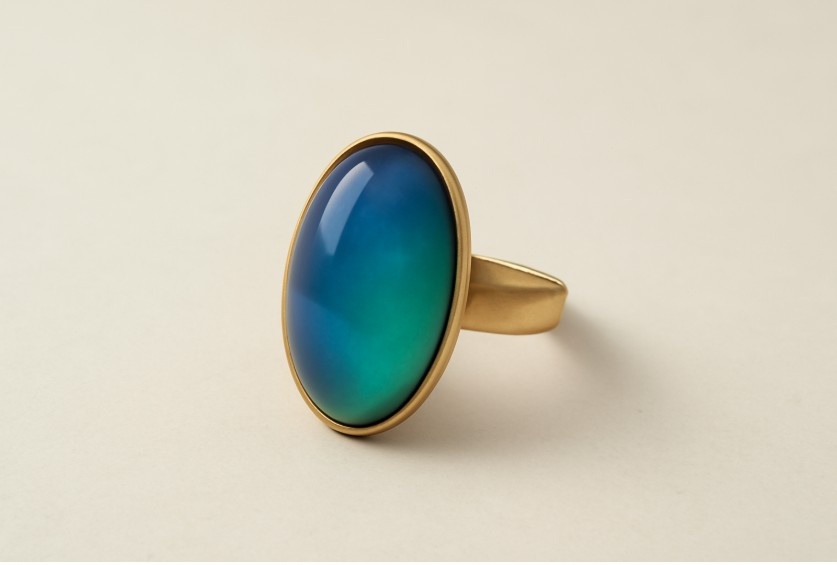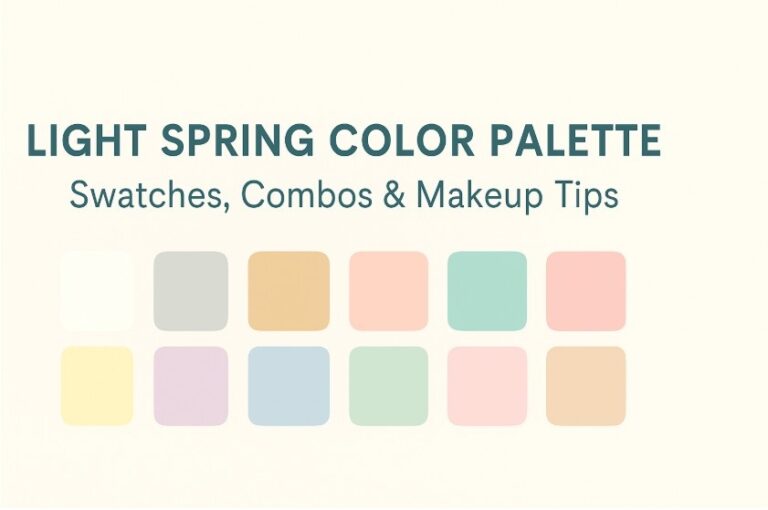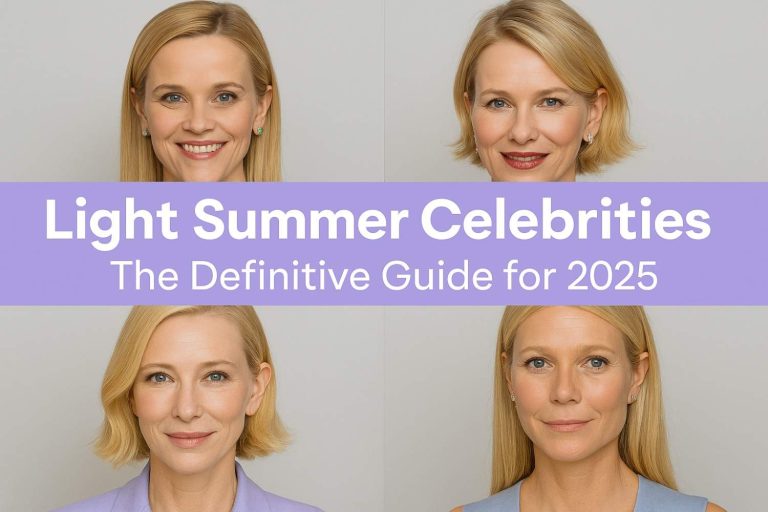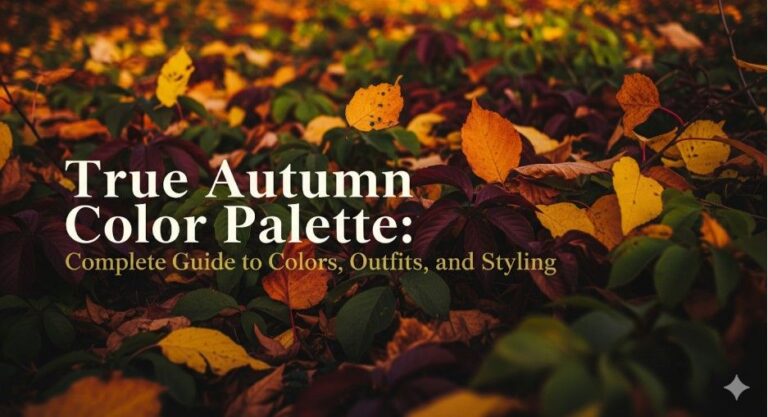You know those mood rings you used to see in the ’90s? The ones that seemed to change color every time you touched them? I’ll admit, I was obsessed with mine.
It was like wearing a secret emotional diary on my finger. While I didn’t fully understand how they worked back then, I loved the idea of my ring showing off my mood—whether I was feeling chill and calm or, uh, a little fiery.
Spoiler alert: most of the time, it was “stress” (thanks, homework).
Now, over 15 years later, I’ve come to appreciate how mood rings can serve as a fun way to think about our emotions.
While they don’t offer the scientific accuracy of a lie detector, they’re a playful reminder to check in with how we’re really feeling.
Here’s everything you need to know about mood ring color meanings, and how you can wear yours as a conversation starter or just for a good laugh.
Why Do Mood Rings Change Color?
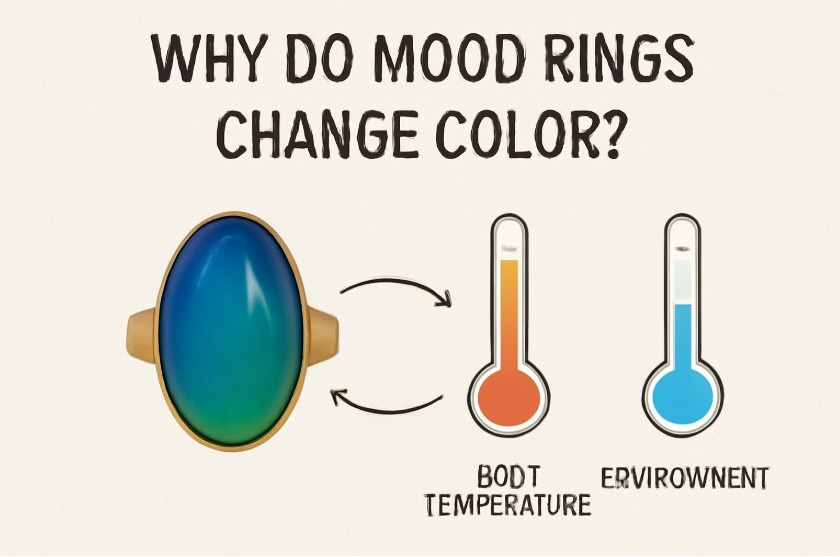
First things first: let’s talk about the science behind these little mood indicators. The colors of your mood ring don’t have much to do with your emotional state—at least not directly. Mood rings work based on body temperature.
Your emotions can influence your temperature (hello, sweaty palms when you’re nervous), but other things like the weather, exercise, or even just how warm or cold your environment is can also play a role in changing the ring’s color.
Still, it’s fun to think of the colors as a sort of emotional guide. Just like how the temperature in a room can change the mood of the space, your body temperature reflects your internal feelings. So, let’s break down what those mood ring colors might mean.
What Do Different Mood Ring Colors Represent?
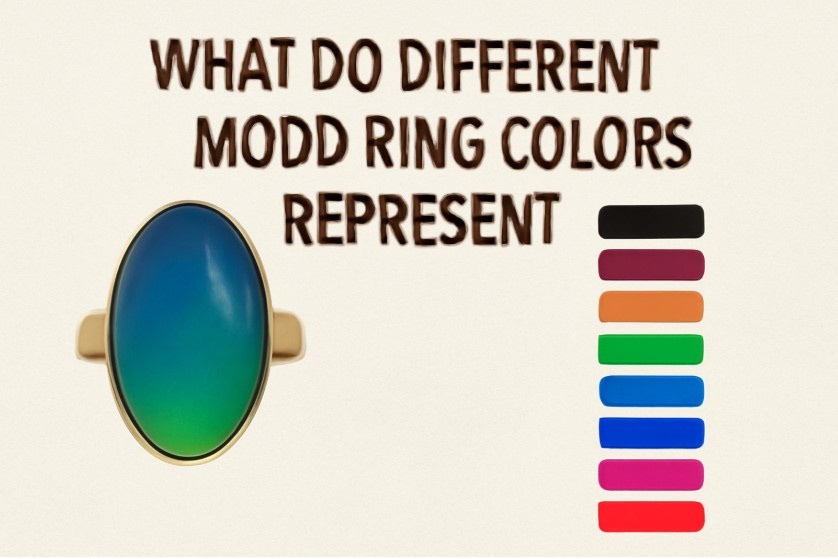
Okay, let’s get into the good stuff. Each color on a mood ring is typically linked to a certain emotional state, but it’s important to remember that these interpretations can vary a bit depending on who you ask. In general, though, here’s what you’ll see:
- Black or Gray: This one’s often associated with negative emotions. If your mood ring turns black, it could mean you’re feeling stressed, anxious, or even angry. It’s like your body saying, “Uh-oh, things aren’t so hot right now.”
- Brown or Gray: A bit of a “meh” color. It’s often tied to feelings of unease, nervousness, or restlessness. If you see this shade, it might be time to take a deep breath and relax.
- Amber (Orange-Yellow): Mixed emotions, uncertainty, or a little bit of excitement can bring out amber. If you’re feeling a bit all over the place, expect this color to pop up.
- Green: Neutral, calm, and content. Green’s a good one—think of it like the Zen of mood ring colors. It could also indicate you’re in a balanced state, not too high or too low.
- Blue: Ah, blue. The color of calmness, relaxation, and happiness. If your ring is glowing blue, you’re likely in a peaceful, chill mood. It’s the color of “I’ve got this.”
- Dark Blue: Deeper levels of relaxation and happiness. This could mean you’re feeling a sense of love, connection, or deep contentment.
- Purple or Violet: Passion, excitement, happiness, or romantic feelings. When the ring turns purple, it could mean you’re feeling a little flirty or just full of joy.
- Red: High energy, passion, or—yep—stress. Red can indicate that you’re either feeling super pumped or maybe a bit frustrated. Either way, it’s intense.
- Pink: Affectionate, loving, or romantic vibes. If your ring turns pink, chances are you’re in a heartwarming, loving mood.
- Yellow: Creative, imaginative, and curious. It’s a cheerful color, but if you’re feeling a little nervous or cautious, yellow might show up too.
- White: The mood ring equivalent of feeling lost or distracted. If your ring turns white, it could indicate you’re feeling frustrated or a bit unfocused.
How to Use Your Mood Ring to Reflect on Your Emotions
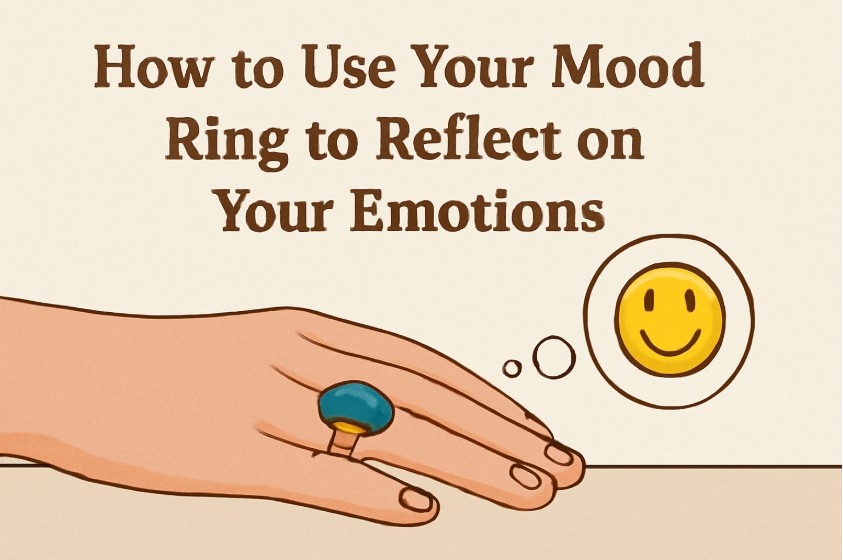
Now that you know what these colors represent, let’s talk about how you can use your mood ring as a tool.
While they’re not going to solve all of life’s problems, they can serve as a fun way to check in with how you’re feeling.
I’ve started using my mood ring as a gentle reminder to pause and reflect. For example, when it turns blue, I know I’m in a good place mentally, and I take a moment to enjoy that calm.
If it shifts to something more intense like red or black, it’s a signal to take a step back and focus on self-care or relaxation.
It’s like a little nudge to pay attention to my emotions—and, let’s be real, we all need a reminder every now and then.
Frequently Asked Questions
1. Can a mood ring tell if I’m lying?
Well, not quite. Mood rings aren’t lie detectors, despite what the movies may suggest. They simply respond to your body temperature, which can be influenced by emotions, but they don’t have the power to pick up on deception.
2. Why does my mood ring turn black sometimes?
Black typically indicates negative emotions like stress or anger. However, it could also mean that your environment is cold, which can lower your body temperature and cause the ring to turn darker.
3. Can I wear a mood ring all the time?
Absolutely! As long as it’s comfortable, a mood ring can be worn just like any other piece of jewelry. It’s a fun accessory that can also give you insights into your mood throughout the day.
4. Do mood rings work for everyone?
Yes, but remember: the color changes depend on body temperature, which can vary from person to person. If your ring doesn’t always change color in the same way as someone else’s, don’t worry—it’s just your unique emotional signature!
Wrapping It Up: Get in Tune with Your Mood
So, what’s the final takeaway? Mood rings may not be the most accurate emotional barometer, but they sure can spark some fun self-reflection.
Plus, they make a stylish conversation piece. Next time your ring turns a surprising color, take a moment to check in with yourself and see if it matches your current emotional state.
And remember, it’s all about the fun, not the science!
And here’s a tip: don’t let the color of your ring define how you feel about yourself.
Whether it’s green, red, or purple, each color is just a fleeting reflection of the moment—and, hey, we’re all a little more colorful than a simple shade can show.
Wear it, love it, and keep feeling those emotions—because, just like your mood ring, they’re always changing!




